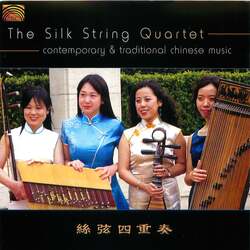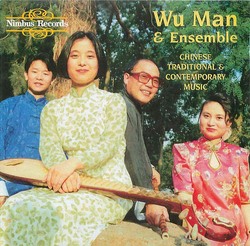Citation (1)
Map of China

Citation (2)
Garland Encyclopedia of World Music-China
- ChinaRead more about Chinese music!
Streaming Video: Dance in China
Streaming Video: Chinese Opera
Databases
- Music & Performing ArtsAn audio and video collection for classical, opera, jazz, world, popular music, and American music. Also includes theatre, dance, and film resources.
- Music Online: The Garland Encyclopedia of World MusicAn encyclopedia about music all over the world.
Facts in Brief

Capital: Beijing
Official Language: Mandarin
Location: The People’s Republic of China covers a vast area of eastern Asia, with Mongolia and the Russian Federation to the north, Tajikistan, Kyrgyzstan and Kazakhstan to the north-west, Afghanistan and Pakistan to the west, and India, Nepal, Bhutan, Myanmar (formerly Burma), the Lao People’s Democratic Republic and Viet Nam to the south
Area: 3.705 million sq. mi
Current Population:1,400,050,000
Climate: China is dominated by a monsoonal regime. Cold air masses build up over the Asian land mass in winter, and the prevailing winds are offshore and dry. In summer there is a reversal of this pattern, and the rainy season is concentrated in the summer months over the most densely settled parts of the country in the east and the south.
Money: Renminbi
Main Religions: Confucianism, Buddhism and Daoism
Citation (3)
Chinese Music
Shi poems:
Written to express diverse emotions and to celebrate various social occasions and interactions, many Tang shi poems are also informative historical records, describing musicians, musical activities and practices.
Bianwen:
Buddhist monks played a significant role in the early development of the ‘transformation text’ (bianwen), a narrative genre, a branch of which tells Buddhist stories; it foreshadowed the blossoming of narrative singing in the Song and subsequent dynasties.
Faqu:
Music flourished under the reign of the great artistic patron Xuanzong (712–56), and the Kaiyuan period (713–41) of his reign is traditionally considered one of the golden ages of Chinese arts. A repertory of 14 large-scale works emerged and was classified as sitting and standing music (libuji, zuobuji). A refined genre called faqu thrived, incorporating Buddhist and Daoist elements into multi-movement suites; Xuanzong actually participated in the teaching and performance of it.
Ci poetry:
Ci poetry is so inherently musical that one of its greatest authors is also one of the few documented composers in Chinese music history.Supported by friends and patrons, Jiang created ci songs such as Yangzhou man (Song of Yangzhou), popular ever since its creation.
Changzhuan:
In addition to ci songs, Song dynasty Chinese also sang a variety of art songs, including the changzhuan, sung to the accompaniment of drum, flute and clappers. This genre is significant because it displays Song attempts to organize individual songs into extended structures: typically a changzhuan includes a prelude, a modally unified sequence of several songs (or an alternation between two individual songs) and a coda. It foreshadows a basic structural principle of Chinese music (qupai ti): by arranging a number of labelled and pre-existent tunes into modally and structurally unified sequences, they can be used as building blocks to create very extensive works, such as a music drama of more than 50 scenes. The individual and pre-existent tunes are called labelled melodies (qupai), whose melodic, rhythmic, rhyme, phrasal and other structure can be adapted to match different texts and expressive needs.
Citation (4)
Composer Highlight
Tan Dun
b. 1957
Tan Dun
Growing up during the Cultural Revolution, he received no schooling or early musical training. For several years he planted rice in a commune. After working as a violinist and arranger at the local opera theatre in Beijing, he was admitted at the age of 19 to the composition department of the newly reopened Central Conservatory of Music, where he studied with Zhao Xindao and Li Yinghai and encountered Western classical music for the first time.
Describing himself as a composer ‘swinging and swimming freely among different cultures’, Tan has drawn inspiration from nature, Chinese philosophy and his childhood memories, a combination that lends his work qualities of timelessness, spirituality and mysticism. The series of works entitled Orchestral Theatre provides perhaps the best summary of Tan's concerns in the 1990s. The cycle aims, in the composer’s words, to restore music’s place ‘as an integral part of spiritual life, as ritual, as shared participation’ through the ‘dramatic medium’ of the orchestra.
His Orchestral Theatre IV received its première in Tokyo in November 1999 from the NHK Symphony under Charles Dutoit. Subtitled ‘The Gate’, it is a multi-media piece for Peking Opera actress, Japanese Puppeteer, string orchestra and film.
Citation: Tan Dun. Grove Music Online. Retrieved 6 May. 2021, from https://www.oxfordmusiconline.com/grovemusic/view/10.1093/gmo/9781561592630.001.0001/omo-9781561592630-e-0000042657.
Books
Jazz in China by "Is there jazz in China?" This is the question that sent author Eugene Marlow on his quest to uncover the history of jazz in China. Marlow traces China's introduction to jazz in the early 1920s, its interruption by Chinese leadership under Mao in 1949, and its rejuvenation in the early 1980s with the start of China's opening to the world under Premier Deng Xiaoping. Covering a span of almost one hundred years, Marlow focuses on a variety of subjects--the musicians who initiated jazz performances in China, the means by which jazz was incorporated into Chinese culture, and the musicians and venues that now present jazz performances. Featuring unique, face-to-face interviews with leading indigenous jazz musicians in Beijing and Shanghai, plus interviews with club owners, promoters, expatriates, and even diplomats, Marlow marks the evolution of jazz in China as it parallels China's social, economic, and political evolution through the twentieth and into the twenty-first century. Also featured is an interview with one of the extant members of the Jimmy King Big Band of the 1940s, one of the first major all-Chinese jazz big bands in Shanghai. Ultimately, Jazz in China: From Dance Hall Music to Individual Freedom of Expression is a cultural history that reveals the inexorable evolution of a democratic form of music in a Communist state.
Call Number: ML3509.C59 M37 2018Musical Creativity in Twentieth-Century China by Abing (1893-1950), a blind folk musician, is a household name in China, but elsewhere he is little-known and his music rarely heard. This volume, which is accompanied by an audio-CD containing some of his best-known works, examines the multiple and conflicting interpretations created around Abing's life and music, and offers insights into this neglected composer and the re-creation of traditional music in contemporary China.
Call Number: ML419.A08 S76 1996Performing China on the London Stage by This book details the history of Chinese theatre, and British representations of Chinese theatre, on the London stage over a 250-year period. A wide range of performance case studies - from exhibitions and British Chinese opera inspired theatre, to translations of Chinese plays and visiting troupes - highlight the evolving nature of Sino-British trade, fashion, migration, the formation of diaspora, and international relations. Collectively, they outline the complex relationship between Britain and China - the rise and fall of the British Empire, and the fall and rise of China - as it was played out on the stages of London across three centuries. Drawing extensively upon archival materials and fieldwork research, the book offers new insights for intercultural British theatre in the 21st century - 'the Asian century'.
Call Number: ML1751.C5 T56 2016Waves and Forms by An examination of the relationship between technical objects and culture in contemporary China, drawing on concepts from science and technology studies. Technical objects constrain what users do with them. They are not neutral entities but embody information, choices, values, assumptions, or even mistakes embedded by designers. What happens when a technology is designed in one culture and used in another? What happens, for example, when a Chinese user is confronted by Roman-alphabet-embedded interfaces? In this book, Basile Zimmermann examines the relationship between technical objects and culture in contemporary China, drawing on concepts from science and technology studies (STS). He presents a new theoretical framework for "culture" based on the notions of waves and forms, which provides a powerful descriptive toolkit for technology and culture. The materials Zimmermann uses to develop and illustrate his theoretical arguments come from three groups of case studies about the use of technical devices in today's China. The first and most extensive group consists of observations of electronic music devices in Beijing; the second is a study of a Chinese networking site, "Happy Network"; and the third is a collection of personal, small-scale observations on the way Chinese characters behave when located in alphabet-encoded devices such as mobile phones, web pages, or printed documents. Zimmermann discusses well-known frameworks from STS and combines them with propositions and topics from Chinese studies. Each of the case studies advances his theoretical argument. Zimmermann's account shows how cultural differences can be integrated into STS research, and how sinologists can turn their attention from ancient texts and traditional art to everyday things in present-day China.
Call Number: ML3917.C6 Z45 2015
Citations
(1): "Shanghai Night Skyline" by "Joan Campderrós-i-Canas"
(2): Country Map (The People's Republic of China), in Europa World online. London, Routledge. University of Tennessee, Knoxville. Retrieved 01 November 2018 from http://www.europaworld.com/entry/cn.MAP.
(3): Country Flag (The People's Republic of China), in Europa World online. London, Routledge. University of Tennessee, Knoxville. Retrieved 06 May 2021 from http://www.europaworld.com/entry/cn.FLAG
(4): China, People’s Republic of. Grove Music Online. Retrieved 6 May. 2021, from https://www.oxfordmusiconline.com/grovemusic/view/10.1093/gmo/9781561592630.001.0001/omo-9781561592630-e-0000043141.




